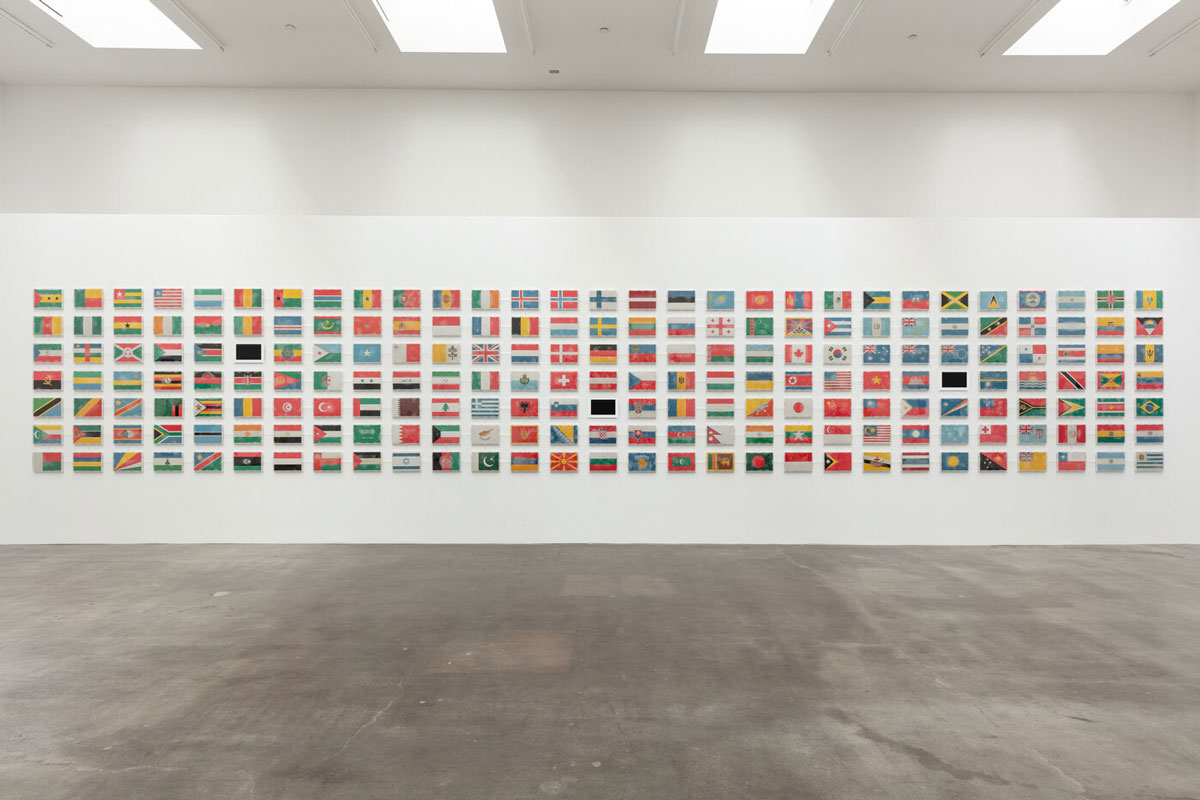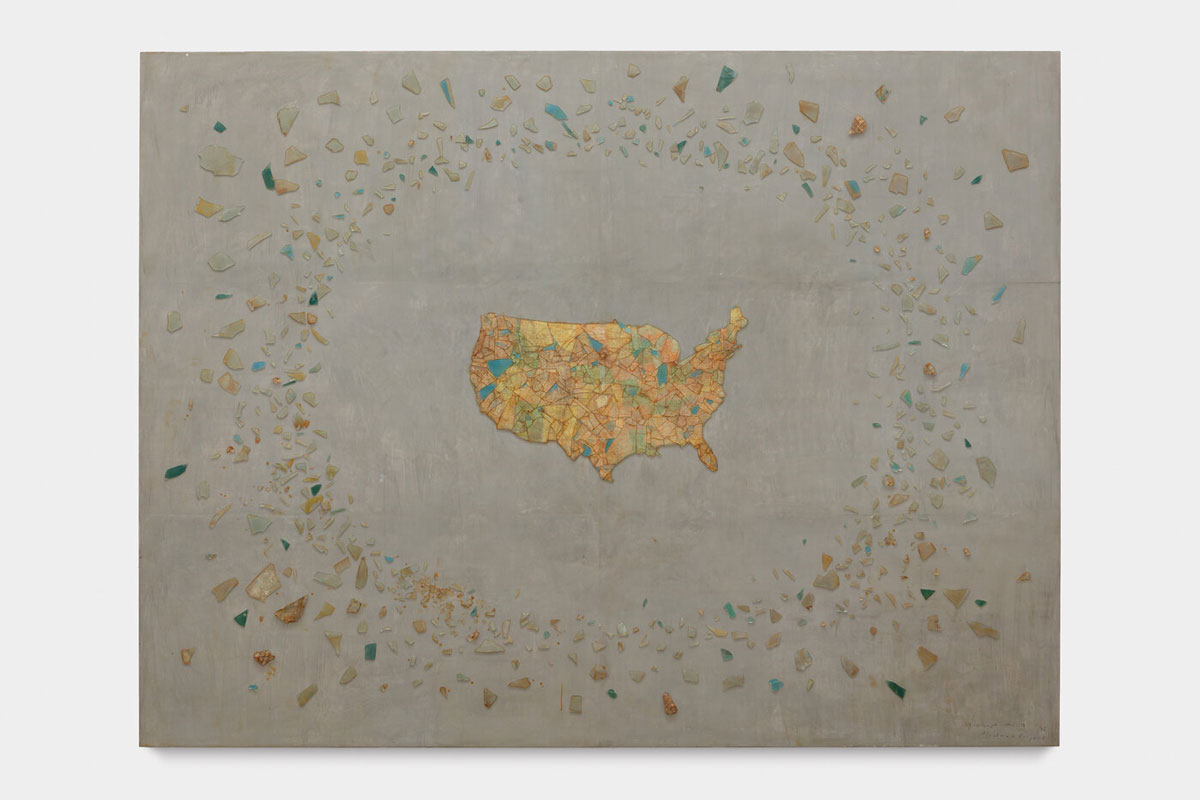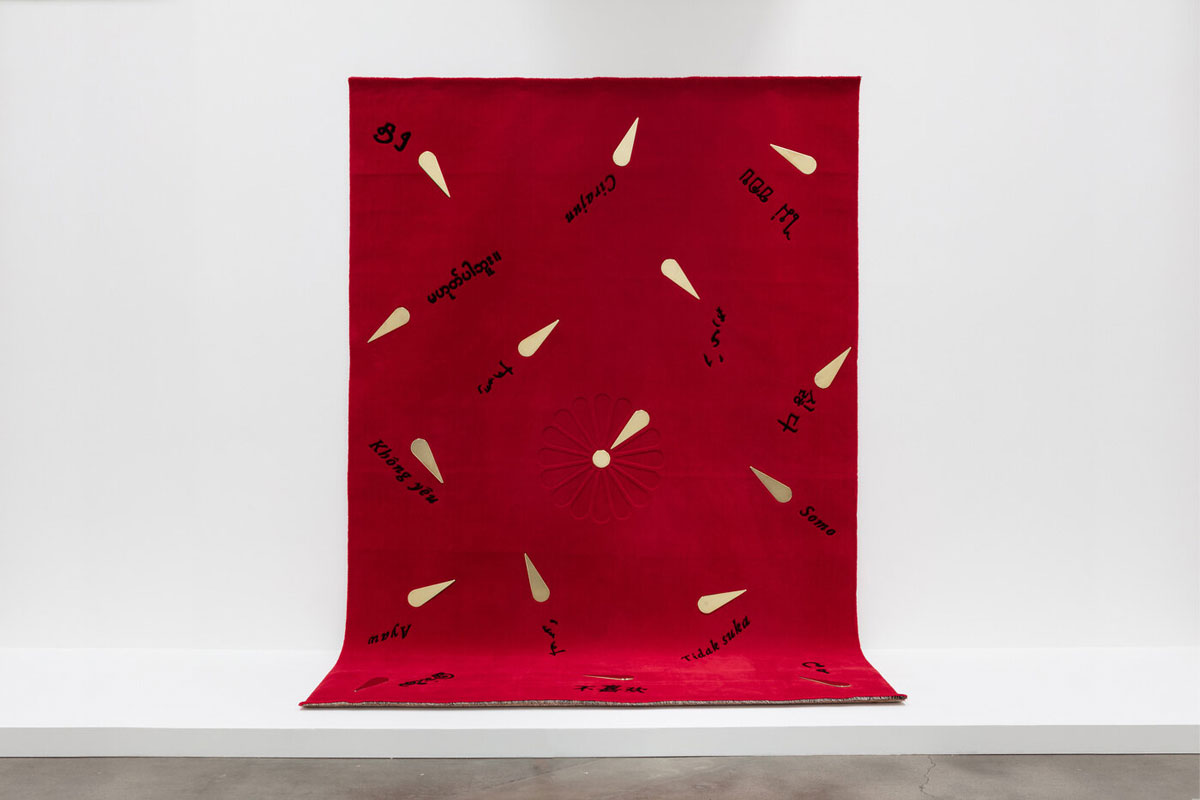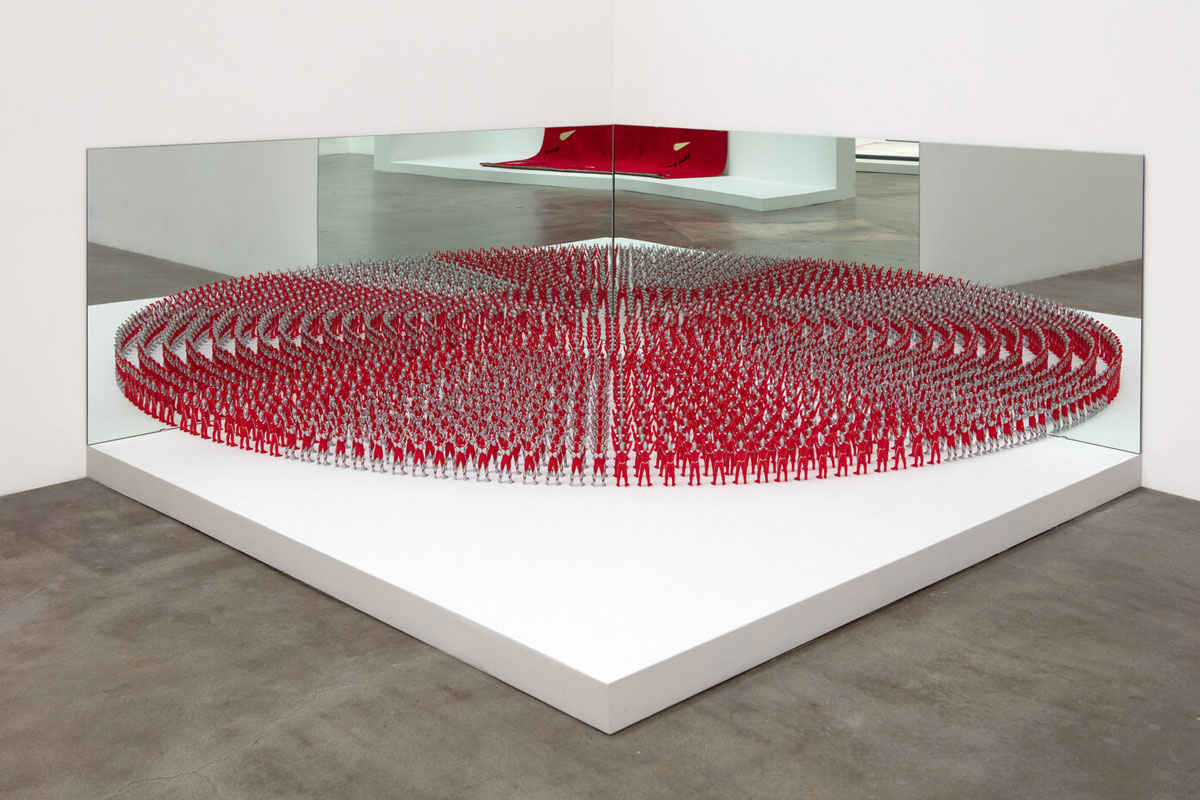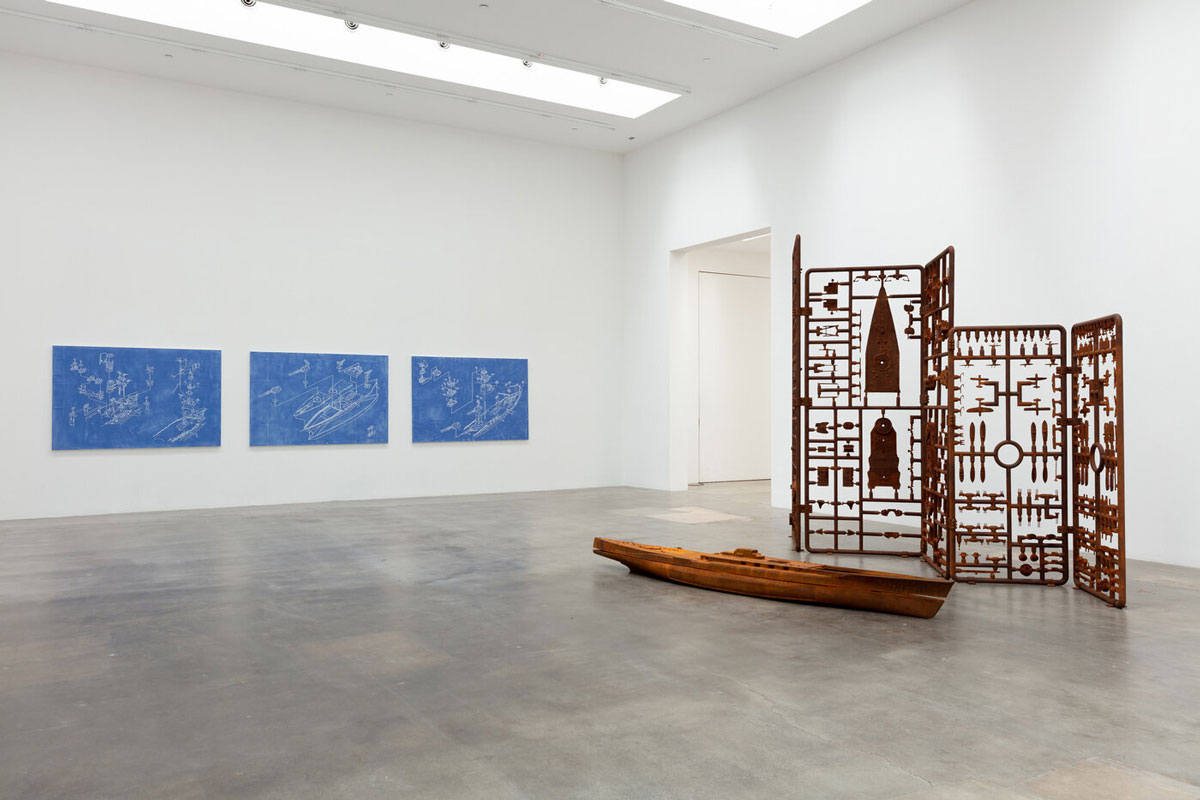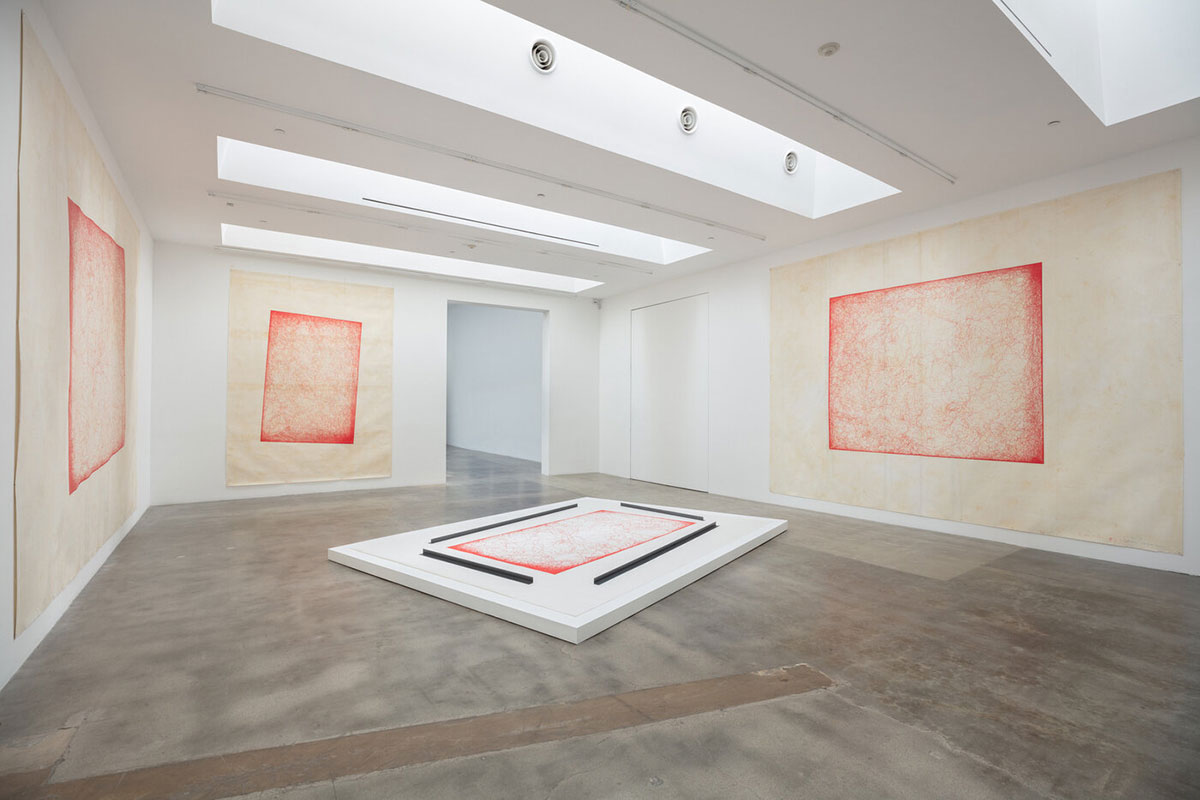ART CITIES:Los Angeles-Yukinori Yanagi
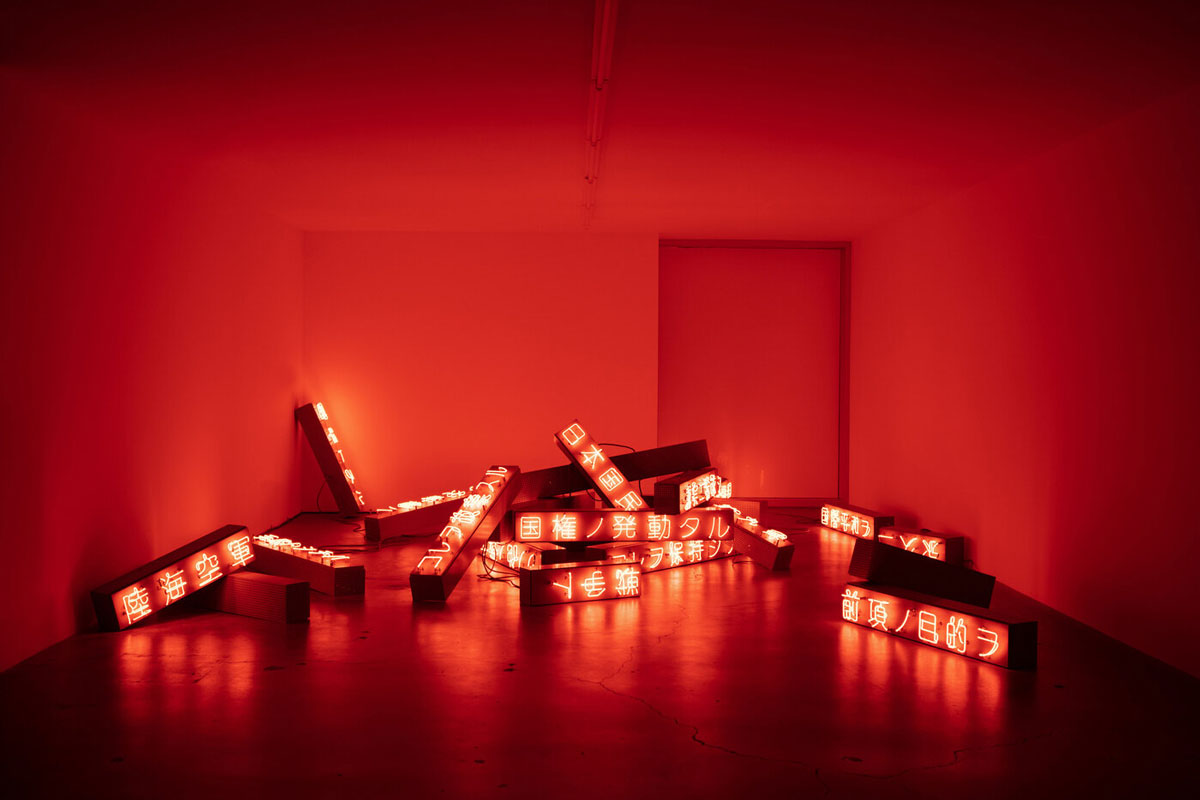 Yukinori Yanagi focuses on large-scale and site-specific installations that interrogate the politics of institutional borders and boundaries often drawing from systems of signs and symbolic imagery. After receiving his MFA in painting in Tokyo in 1985, Yanagi moved to the U.S. for an MFA from Yale University. It was at this time that the notion of “wandering as a permanent position” began to occupy the artist’s investigations. Yanagi used flags as symbols of nationalism and stability of place as a point of departure for major works of this chapter.
Yukinori Yanagi focuses on large-scale and site-specific installations that interrogate the politics of institutional borders and boundaries often drawing from systems of signs and symbolic imagery. After receiving his MFA in painting in Tokyo in 1985, Yanagi moved to the U.S. for an MFA from Yale University. It was at this time that the notion of “wandering as a permanent position” began to occupy the artist’s investigations. Yanagi used flags as symbols of nationalism and stability of place as a point of departure for major works of this chapter.
By Dimitris Lempesis
Photo: Blum & Poe Archive
Yukinori Yanagi in his solo exhibition presents his first major U.S. survey of work. Having resided in the U.S. in the late 1980s and 1990s, obtaining his MFA in sculpture from Yale University School of Art in 1990, Yanagi was first recognized on the world stage at the 45th Venice Biennale in 1993 with “World Flag Ant Farm” (1990). As a monumental process-based installation, this work featured 180 national flags, each made out of acrylic panels of painted sand and connected by plastic tubes through which ants burrowed and effectively broke down both physical and geo-political borders. First presented in 1991, “World Flag Ant Farm 2020” is featured in the current exhibition in an updated version, comprising approximately 200 national flags that reflect radical shifts in world politics over the last thirty years. As his former professor Vito Acconci once stated in 1990, Yanagi “attempts to join natural processes with cultural mechanisms… that then go on to have a life and duration all their own”. Yanagi’s machine-perfect sculptures and installations probe the contested boundaries or limits of politically and ideologically constructed territories and national myths. In “Banzai Corner 2020” (1991/2020) Yanagi uses the Ultraman figurine, a half-extraterrestrial and half-Japanese superhero who fights to save Japan from aliens. In this installation, Yanagi aligns the figures in perfectly alternating rows of red and silver forming a quarter of a circle, positioned toward two adjacent mirrors lining the right angle of a room. The reflections of the figures on both mirrors create the illusion of a 360-degree circle which forms the pre-war imperial flag, a red circle with radiating white lines. Both arms of each figurine are raised in a “banzai” gesture, recalling wartime kamikaze pilots, soldiers, and citizens hailing to the emperor. By using mirrors to indicate the constructed quality of national unity, Yanagi deconstructs the illusion of Ultraman’s contribution to national unity, revealing the incompleteness of Japanese identity. Yanagi’s work also investigates borders or the spaces at the edges of a boundary, where oppression is felt most by inhabitants and the manipulation of myth and control is exerted over citizenry and minorities. “Wandering Position – Alcatraz” (1997) comprises three large-scale drawings in the size of prison cells from Alcatraz Federal Penitentiary. Yanagi conducted fieldwork at the prison for two weeks in 1996 after learning about a second-generation Japanese-American, Tomoya Kawakita, who was charged for treason during World War II, sentenced for life at Alcatraz, but eventually pardoned by President Kennedy in 1963. The drawings are traces of red crayon made from following ants in each of these prison spaces. Another work created during this residency, “Broken Glass on Map” (1996), is a U.S. map culled from discarded glass shards from the site. “Article 9” (1994) is a floor installation of multiple beams dispersed with red Japanese neon text that break up the infamous Article 9 clause in the Japanese Constitution declaring the renunciation of war. The text exposes the fraught history of the clause, which was originally written in English and administered by the U.S. during the American Occupation, delimiting Japan’s military capacity. Later translated into Japanese and retranslated into English, this clause reveals the continued ambiguities in the meaning, intent, and agency of national law and international communication. Finally, following the previously exhibitied “Pacific” (1996) and “Akitsushima 50-I/II” (2019), this presentation features a brand-new installation of “Nagato” (2020), a cast-iron replica scaled at 1:70 of a World War II dreadnought battleship. First commissioned by the Imperial Japanese Army in 1920, this was one of the last surviving battleships that became a detonation target and sank at Bikini Atoll in 1946. Initially taken from a plastic model kit and retaining the sand mold on the frames, this installation forces us to consider the artistry of violence through the cultural obsession with the technical craft of war machinery.
Photo: Yukinori Yanagi , Article 9, 1994, Neon, plastic box, print on transparency sheet and acrylic frame, Installed dimensions variable, Photo: Jenalee Harmon © Yukinori Yanagi, Courtesy the artist and Blum & Poe Gallery
Info: Blum & Poe Gallery, 2727 S. La Cienega Boulevard, Los Angeles, CA, USA, Duration: 17/7-14/8/2021, Days & Hours: Tue-Sat 10:00-18:00, Sun 12:00-18:00 by appointment only (book here), https://www.blumandpoe.com
